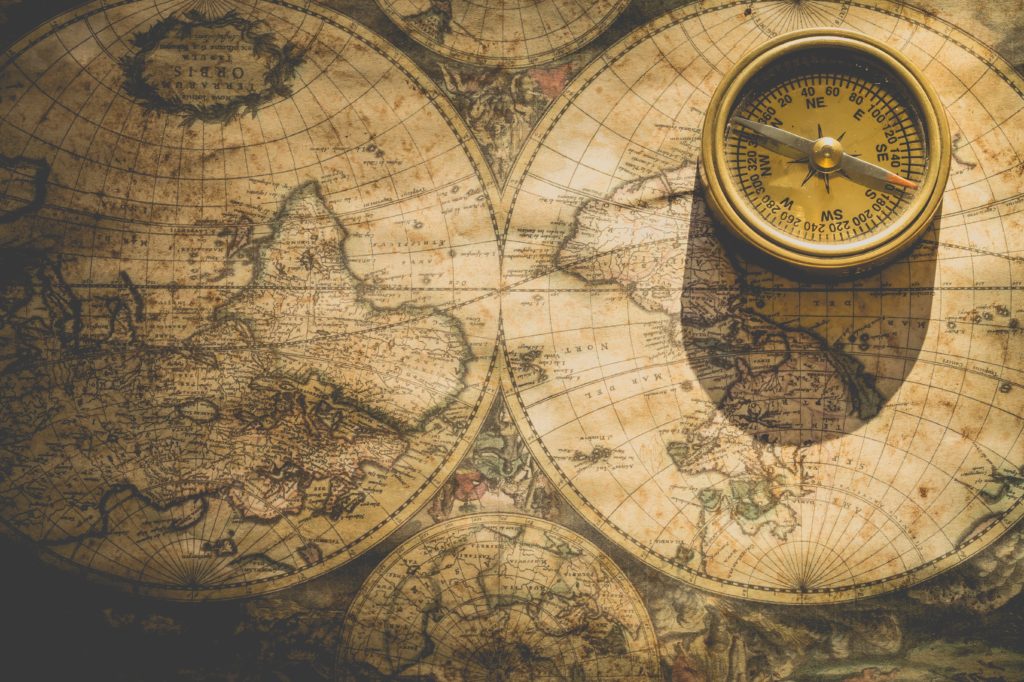To recap: I’ve been addressing the interesting but often unverifiable claims that the Enneagram is quite old. Often, this claim is equal parts squishy definition and wishful thinking.
Now I turn to my final chapter on this journey: why is it wishful thinking? Why is being old desirable, let alone desirable enough to get us all to do some dubious accounting?
There’s the undeniable romance of it, of course. Compare this snippet of a description of the Enneagram’s history:
Variations of this symbol also appear in Islamic Sufi traditions, perhaps arriving there through the Arabian philosopher al-Ghazzali. Around the fourteenth century the Naqshbandi Order of Sufism, variously known as the “Brotherhood of the Bees” (because they collected and stored knowledge) and the “Symbolists” (because they taught through symbols) is said to have preserved and passed on the Enneagram symbol.
Speculation has it the Enneagram found its way into esoteric Christianity through Pseudo-Dionysius (who was influenced by the neo-Platonists) and through the mystic Ramon Lull (who was influenced by his Islamic studies.)
On the frontispiece of a textbook written in the seventeenth century by the Jesuit mathematician and student of arithmology Athanasius Kircher, an Enneagram-like figure appears.
https://www.enneagramspectrum.com/173/history-of-the-enneagram/
With the pedestrian-sounding contention that it’s an amalgamation, created in the 1970s, out of bits of various ideas.
Wouldn’t you rather have that Indiana Jones trek through the sands of time, with a soupçon of a Da Vinci Code-style coverup, a conspiracy of ancient and esoteric brotherhoods?
Who wouldn’t? Especially when your alternative is that people in the 20th century, many of whom are still living, just sort of…made something up.

We have a deep craving for authenticity. This is good. We are naturally skeptical. Also good. So especially when it comes to something as sensitive as a system that will purport to turn a dark mirror on our subconscious motivations, we may well take a step back and demand to see some badges. Ancient brotherhoods are decent badges to flash, quelling at once our skepticism and our thirst for intrigue.
Or, those of us who have found this system helpful, and who also thrill to old stuff, get deeply excited when we see a glimmer of a comparison in something old: Look, the stops on Odysseus’s journey in the Odyssey appear to align with the Enneagram types! Look, there are seven or nine deadly sins, give or take! And we may skip over the task of actually finding a credible connection that goes beyond coincidence, flapping our hands instead at the unknowability of ancient wisdom traditions.
But here’s my theory: saying “it’s new” isn’t all that much more accurate than saying “it’s old.” Was it made up in the 1970s? In my opinion, yes: anything recognizable as the Enneagram of Personality was. But I don’t think we need to stop there, because those people in the 1970s (principally Ichazo and Naranjo) didn’t make up this system out of new cloth. They made it out of lots of bits of old cloth.
And new stuff out of old cloth is as close as we often get in this world to “old cloth.”
Here’s an analogy: even as the genetic testing industry continues to grow (and even though I very much enjoy genealogy), it’s clear that you don’t have to go back very far until the distinction between your-family and not-your-family breaks down.
An example from the tremendously interesting A Brief History of Everyone Who Ever Lived by geneticist Adam Rutherford:
One fifth of people alive a millennium ago in Europe are the ancestors of no one alive today. Their lines of descent petered out at some point, when they or one of their progeny did not leave any of their own. Conversely, the remaining 80 percent are the ancestor of everyone living today. All lines of ancestry coalesce on every individual in the tenth century.
Rutherford at 162.
Does that seem impossible–that every living person of European descent is descended from every European in the year 1000 or so who has any living descendants? He explains further:
[A]ccept that everyone of European descent should have billions of ancestors at a time in the tenth century, but there weren’t billions of people around then, so try to cram them into the number of people that actually were. The math that falls out of that apparent impasse is that all of the billions of lines of ancestry have coalesced into not just a small number of people, but effectively literally everyone who was alive at that time. So, by inference, if Charlemagne was alive in the ninth century, which we know he was, and he left descendants who are alive today, which we also know is true, then he is the ancestor of everyone of European descent alive in Europe today.
Rutherford at 162.
So all of us who have European descent are related to Charlemagne. All of us who have European descent are, equally, related to Kurt the Pig Boy who lived just down the hill from Charlemagne’s palace, as long as Kurt has any living descendants.
This kind of math takes a bit of the wind out of the sails of genealogy: those of us who are able to trace our ancestry back several generations often feel proud if we find someone notable in the genetic heap, perhaps forgetting how many hundreds, or thousands, or even millions of others also can claim the same heritage. Charlemagne is indeed in many of our bloodlines, but in menial quantities that it’s hardly worth mentioning. He belongs to history far more than he belongs to our genealogy.
Rutherford shows how this logic goes if we zoom out from Europe to the entire world: at least one researcher has estimated that “the most recent common ancestor of everyone alive today on Earth lived only around 3,400 years ago.” Rutherford at 164.
If this sounds too recent, or baffling because of remote populations in South America or the islands of the South Pacific, remember that no population is known to have remained isolated over a sustained period of time, even in those remote locations. The influx of the Spanish into South America meant their genes spread rapidly into decimated indigenous tribes, and eventually to the most remote peoples. The inhabitants of the minuscule Pingelap and Mokil atolls in the mid-Pacific have incorporated Europeans into their gene pools after they were discovered in the years of the nineteenth century. Even religiously isolated groups such as the Samaritans, who number fewer than 800 and are sequestered within Israel, have elected to outbreed in order to expand their limited gene pool.
Rutherford at 164.
So go back less than 4,000 years, and there’s some anonymous man or woman from whom every person alive can claim descent. It’s kind of mind-blowing.

There is no simple, linear descent of humans. Human genealogy is inherently a net, a web, that reaches all around the world much more speedily than we tend to assume.
Likewise, to bring it back around to the Enneagram, there is no pure, arcane, secret tradition. People, and ideas, don’t work like that. There is change and exchange and learning and borrowing and mixing and syncretizing. And that’s generally good.
Just as “no population is known to have remained isolated over a sustained period of time,” ideas don’t tend to idle intact within secret brotherhoods, nor do languages sit immobile in faraway mountain hollers. Change, not stability, is the story.
And in my view, the fact of the Enneagram of Personality being relatively new is what makes it so valuable. If the system is fixed, then it is no one’s–it is unaccountable and inflexible to new insights and new generations’ shifting perspectives. If it refers back to an ancient brotherhood, who’s to say what it is? What it’s not?
Instead, I vote that we recognize–and celebrate–the new origins of this old thing. This new quilt made from various semi-old rags. It’s a solution that gives us some of the romance of the old, and some of the novelty of the new. That’s about as good as we can do.